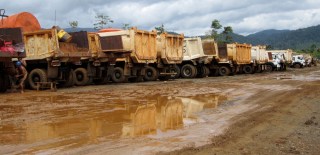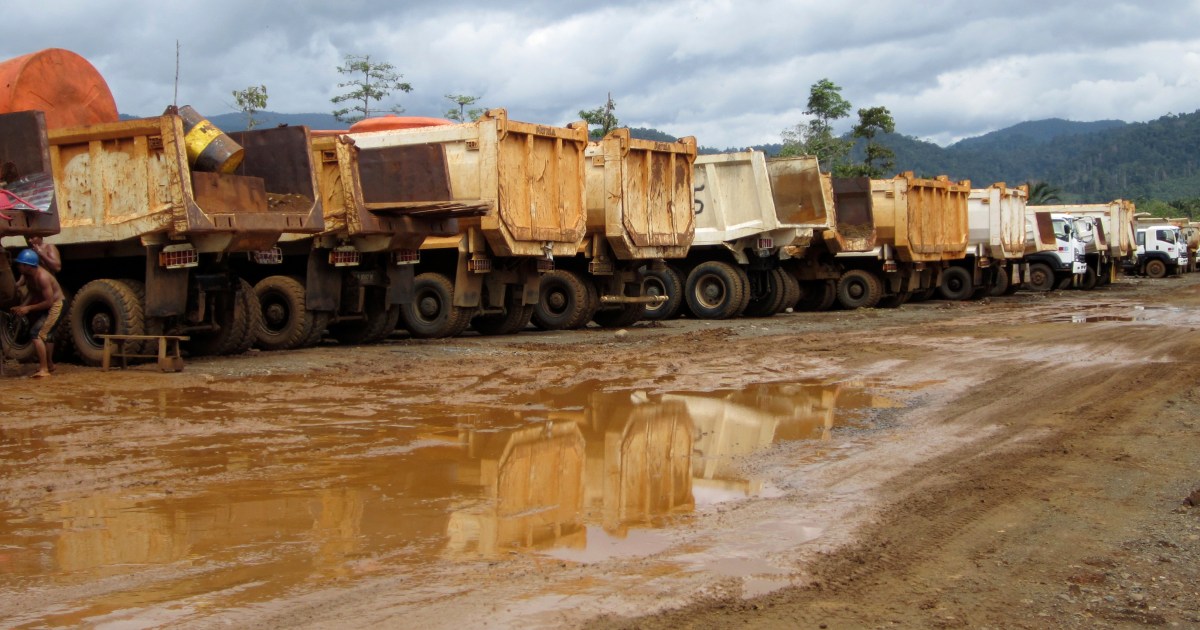
Indonesia—the world’s largest nickel miner—is making moves to become a key player in the electric vehicle supply chain. Most of Indonesia’s nickel output is currently Class 2 nickel, a low-purity type used for stainless steel. The country’s government and the mining sector are determined to transform its nickel industry to meet the rising demand for Class 1 nickel, a crucial component for electric vehicle (EV) batteries.[1] EVs are widely viewed as a pillar of the transition toward renewable energy sources since they typically have a smaller carbon footprint over their lifespan than gasoline-powered vehicles. These efforts have seen some success to date, with the EV and battery manufacturing sector making investments in the country’s downstream industry (in other words, investment in end-uses of nickel, such as EV batteries), including an EV battery cell plant near Jakarta.
Nickel is a key part of Indonesia’s commodity-led development strategy, in which the country has banned exports of raw commodities to attract downstream investment and catalyze socioeconomic development. The government is planning to tax exports of nickel pig iron (NPI) and ferronickel, which would likely boost production of battery-grade nickel. And for EV manufacturers struggling to source nickel in a tight market, Indonesia has become a key supplier in the past year.
But there is a catch: Indonesia’s nickel sector is particularly carbon-intensive and environmentally damaging. This creates an awkward challenge for EV manufacturers, who are under pressure to manage environmental, social, and governance (ESG) issues in their supply chains, including carbon emissions. Some EV manufacturers have expressed a preference for “low-carbon” nickel. However, the supply of “low-carbon” is insufficient to meet forecasted demand, and it comes with a higher price tag. In this piece, we unpack the environmental risks and recent developments in Indonesia’s nickel industry that illustrate several of the difficult trade-offs required for decarbonization.
Environmental concerns
Indonesia’s nickel sector poses many environmental challenges. Its nickel processing industry is especially carbon-intensive due to its reliance on coal. Civil society groups have also voiced concerns about the environmental risks of nickel mining and processing. Most recently, environmental groups urged Tesla to terminate its investment plans in the country’s nickel industry, citing concerns over deforestation, pollution of water bodies, and disruption to the livelihoods of indigenous people as a result of nickel mining.
The way nickel is processed, and particularly how Indonesian nickel resources are transformed into material suited for EV batteries, is energy-intensive and environmentally damaging. On average, producing Class 1 nickel from Indonesia’s laterite ore resources, releases two to six times more the amount of carbon dioxide emissions than producing Class 1 nickel from sulfide deposits. The latter tend to have higher grades than laterite deposits and are easier to process, but more laterite projects in Indonesia and elsewhere are being developed to meet rising demand for nickel. Moreover, Indonesia’s energy grid remains highly reliant on coal—which accounts for approximately 60 percent of its total electricity capacity. Its industrial parks, which have become major hubs for nickel and aluminum processing, currently account for 15 percent of the country’s coal power output.
If plans to expand the captive power of these industrial parks are fulfilled, their share of Indonesia’s total coal power output is expected to rise to 24 percent. While Indonesia’s government technically has plans to phase out coal for electricity by 2056, it may not prove willing to make any economic tradeoffs, including reducing industrial park capacity.
Initiatives by Tsingshan, the world’s largest nickel producer, highlight some of these environmental challenges. For example, Tsingshan is spearheading one of Indonesia’s five hydrometallurgy projects through PT Huayue, a joint venture that is using high-pressure acid leaching (HPAL) to produce Class 1 nickel from laterite resources, which are generally used for Class 2 nickel production. Even if in the long-term HPAL in Indonesia can be decarbonized, the process produces “toxic waste that is difficult to manage” and poses environmental risks, like many traditional metal smelters in Indonesia.
Similarly, Tsingshan has also converted Class 2 nickel pig iron (NPI), which is mainly used to produce stainless steel, into nickel matte, a higher-grade form of the material. This process has raised even greater concerns given that matte production from NPI results in nearly three times as many greenhouse gas emissions per unit of nickel as HPAL processing.
Investments and market dynamics
The government of Indonesia and investors jumping into the country’s nickel sector seem willing to overlook these environmental concerns. President Joko Widodo has expressed aspirations to develop an onshore nickel-based EV industry, including processing and refining, as well as producing battery components. In 2020, Indonesia banned raw nickel exports to develop a domestic downstream industry, which halted the large outflow of raw nickel to China.
Since the export ban, Indonesia has seen an uptick in downstream investments focused on nickel refining and processing, especially from China. Chinese refineries, including GEM Co, have committed approximately $30 billion to offshore their activities to Indonesia. In mid-April 2022, Chinese battery giant CATL entered a joint investment in Indonesia for nickel mining and EV battery production.
Downstream EV players, including Volkswagen and Tesla, have also aimed to secure minerals from the Southeast Asian nation. In April 2022, a Korean consortium led by LG Energy Solution, the world’s second-largest EV battery manufacturer, signed a $9 billion investment agreement with local mining company PT Aneka Tambang (Antam) and Indonesia Battery Corporation. LG Energy Solution is also building a $1.1 billion battery cell plant in Karawang Regency, 65 km southeast of Jakarta, as part of a joint venture with Hyundai Motor Group. China has played a key role in the financing of coal-fired power plants required for nickel processing. Indeed, China’s large-scale investment in Indonesia’s nickel industry raises serious questions about China’s own climate agenda. President Xi has announced broad plans to stop building coal plants overseas and halt new coal-related projects. Indonesian coal-powered nickel processing plants seem to be an exception. A report by the Centre for Research on Energy and Clean Air explains that China may be using a loophole to develop two nickel and steel processing plants powered by coal plants in Indonesia. The projects fall under a gray area, as they are not “new.” Rather, they are linked to existing steel and nickel complexes approved before the ban. As a result, the coal-fired power plants have secured construction and purchasing agreements from Chinese firms.
Moreover, it would be difficult for EV manufacturers to cut Indonesian nickel out of their supply chains even if they wanted to. Russia supplies roughly 20 percent of Class 1 nickel, but the repercussions of its invasion of Ukraine and the potential for sanctions may reduce this and constrain European and U.S. actors’ willingness or ability to source nickel from Russia. Given the investments into Indonesia’s refining and processing capacity and the sheer amount of its nickel reserves, Indonesia will likely become an even more important source of refined nickel for EV batteries over the next decade.
Moving forward
Government action will be vital to cutting carbon emissions in the nickel supply chain. There are some encouraging moves in Europe. For example, the new EU Batteries Regulation will require EV battery manufacturers to disclose the carbon footprint of all batteries sold in Europe. While manufacturers may be motivated to reduce the carbon footprint of their batteries, including by opting for lower-carbon nickel, they will also likely face practical constraints due to a supply squeeze. Moreover, there is little sign of action when it comes to cutting carbon emissions in the nickel supply chain from other major players like China and the U.S.
If the industry and policymakers ignore the climate threats of coal-powered industrial parks used to produce substances like nickel, Indonesia could solidify its standing as one of the world’s largest but dirtiest nickel players in the EV supply chain.
Footnotes:
[1] According to the IEA, “There are two types of primary nickel products: high-purity Class 1 products (containing 99.8% nickel or above) and lower-purity Class 2 products (containing less than 99.8% nickel). Battery cathodes need nickel sulfate, which is synthesized from Class 1 products.”


